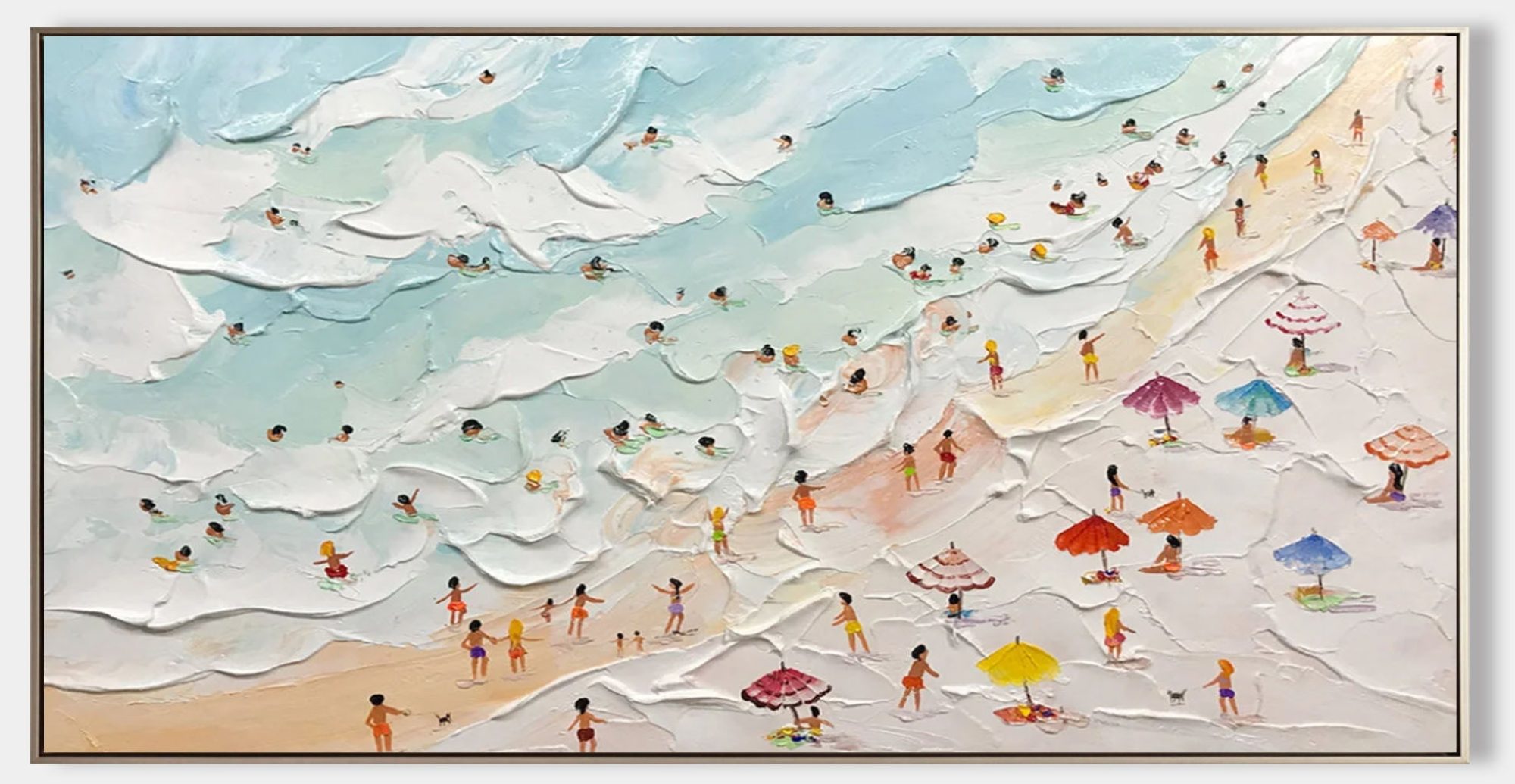Modern textured oil paintings have gained immense popularity in the world of contemporary art, offering a refreshing departure from traditional flat, smooth surfaces. The combination of vibrant colors, rich textures, and three-dimensional forms brings an entirely new dimension to the canvas. In this article, we’ll explore the beauty of textured oil paintings, showcasing how this medium has evolved and why it resonates so deeply with art lovers today.
What Are Textured Oil Paintings?
Textured oil paintings are a type of artwork in which the artist uses thick layers of oil paint to create a raised surface. This texture can be formed through various techniques, such as palette knife work, impasto, or by applying other materials to the canvas. The result is a rich, tactile experience that invites the viewer to not only look but also feel the artwork. Unlike traditional oil paintings, which focus primarily on the two-dimensional aspects of the artwork, textured paintings invite a dynamic interaction between light, shadow, and surface.
The beauty of textured oil paintings lies in their ability to evoke emotion and capture movement. The brushstrokes, the choice of colors, and the raised textures all come together to create a visual experience that is immersive and compelling. Each texture on the canvas tells a story, whether it’s the roughness of an impasto technique or the smooth yet rich surfaces created by layering thick paint.
The Evolution of Texture in Modern Oil Paintings
Texture in oil painting is not a new concept. Historically, artists like Vincent van Gogh and Rembrandt used thick impasto techniques to add depth to their works. However, modern textured oil paintings have taken this technique to new heights, using the texture not just for depth but also as an integral part of the composition.
In the modern era, artists began to experiment with the relationship between texture and color, pushing the boundaries of what oil paint could do. They started using unconventional tools like palette knives, sponges, and even their hands to create more organic textures. This gave birth to new styles that blend abstraction and realism in stunning ways. The texture itself became an essential aspect of the artwork, often carrying as much weight as the image or subject matter.
Why People Love Textured Oil Paintings
One of the main reasons people are drawn to textured oil paintings is the unique sensory experience they offer. The physicality of the texture adds depth and dimension, making the artwork feel alive and interactive. Viewers are often compelled to touch the surface, experiencing the different layers and forms that bring the piece to life. The dynamic interplay of light and shadow on textured surfaces creates a visual experience that changes depending on the angle of view, adding a level of intrigue and interest to the piece.
Moreover, textured oil paintings evoke emotions in a way that traditional paintings may not. The roughness or smoothness of the texture can communicate a range of feelings—from the raw intensity of an abstract piece to the serene calmness of a landscape. The texture draws the viewer in, making them feel more connected to the artwork and its underlying message.
Textured Oil Paintings in Contemporary Art
In today’s art world, textured oil paintings are highly regarded for their innovative qualities. Contemporary artists continue to experiment with new techniques, incorporating textures to create dynamic, thought-provoking pieces. These modern textured artworks often reflect the complexity of contemporary life, using the texture as a metaphor for human experiences, struggles, and triumphs.
Textured oil paintings are now found in galleries and exhibitions worldwide, with collectors appreciating the depth and originality they bring to the art world. The tactile nature of these paintings has led to a rise in demand for artwork that offers a more sensory, immersive experience.
Conclusion
Textured oil paintings offer a rich, multidimensional approach to art that has captivated collectors and art lovers for decades. The combination of color, texture, and form creates a dynamic visual experience that transcends the boundaries of traditional painting. Whether you’re drawn to the beauty of abstract expression or the emotional depth of a textured landscape, modern textured oil paintings have something for everyone.
Appreciation of Modern Textured Oil Paintings: Modern oil painting texture
